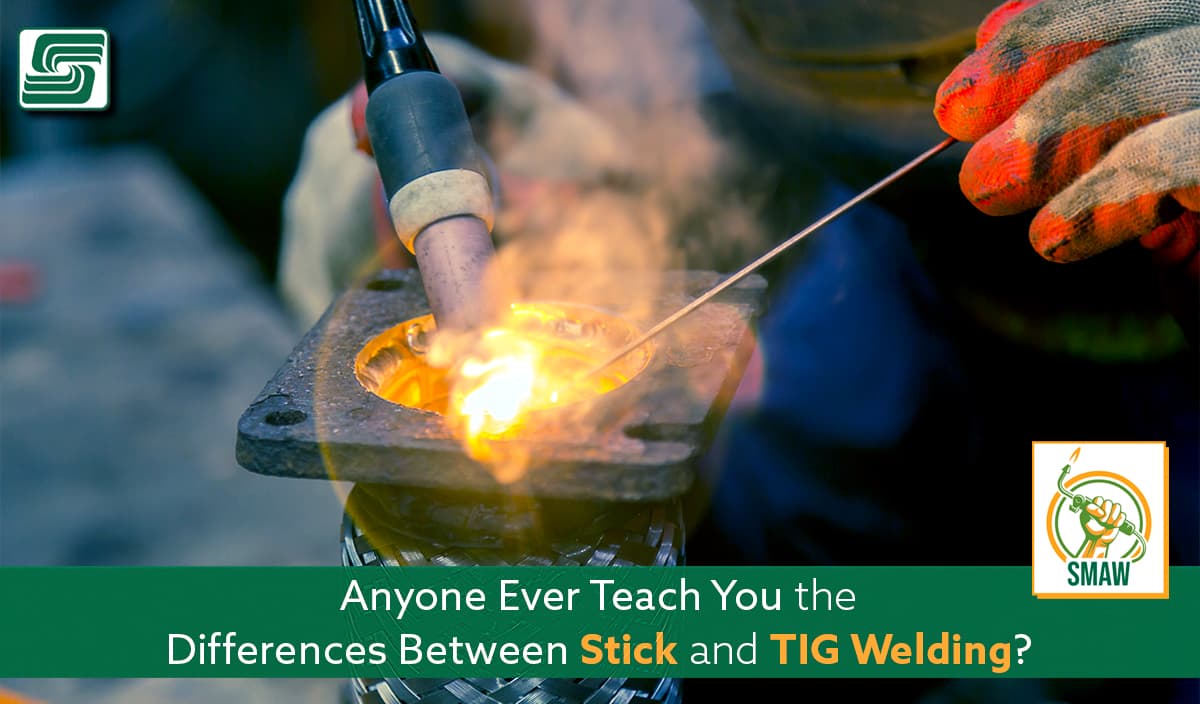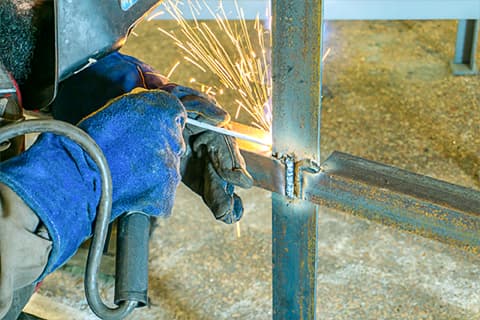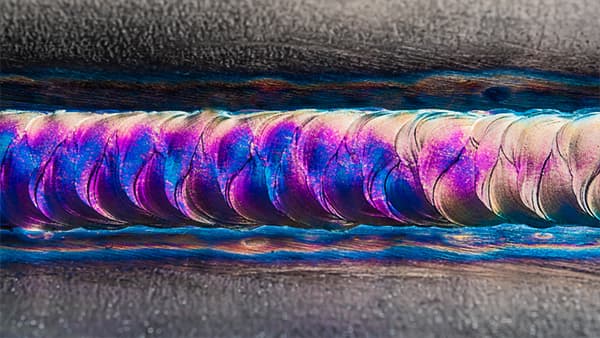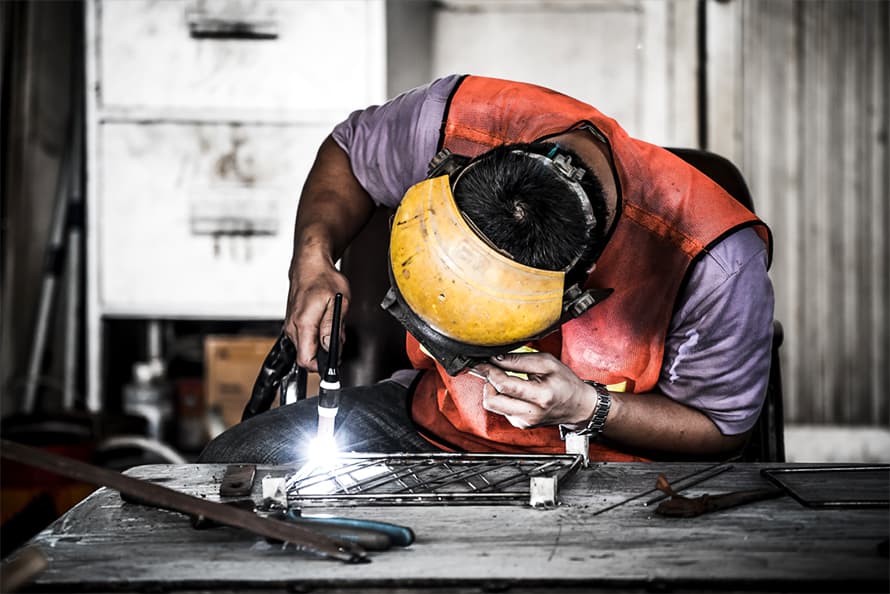
FAB Times SMAW Series
In our recent series on FAB Times, we delved deep into the world of Shielded Metal Arc Welding (SMAW). We focused on SMAW's nuances, starting with an overview of popular welding methods. The series also pits SMAW against other welding techniques, such as FCAW, GMAW, GTAW, and SAW, to help you understand which method best suits your needs.
Articles in the Series:
- How Well do You Know the 5 Most Popular Welding Methods?
Get a broad view of the top welding methods, including SMAW. Read More
- What Does it Take to Master the Art of Shielded Metal Arc Welding?
Learn what makes SMAW unique and how to master it. Read More
- SMAW vs. FCAW: Sparking a Debate About These Popular Welding Methods
Compare SMAW and FCAW to find out their pros and cons. Read More
- SMAW vs. GMAW: Unveiling the Key Differences to Decide Which is Better
Explore the differences between SMAW and GMAW. Read More
- Anyone Ever Teach you the Differences Between Stick and TIG Welding?
Understand how SMAW differs from GTAW, also known as TIG welding. Read More
- Speed Matters: How SAW Outpaces SMAW in Welding Efficiency
Learn why SAW is faster than SMAW and when to use each method. Read More
In the vast realm of metalwork, welding is an indispensable process that unites separate pieces of metal to create a strong, durable bond. Welding has helped to construct buildings, bridges, automobiles, and countless other structures and objects that shape our modern world.
At its essence, welding involves melting the edges of two or more metal surfaces and allowing them to fuse upon cooling. However, within this seemingly straightforward process lie many techniques that offer distinct advantages for different applications.
Understanding the nuances of various welding techniques is paramount for achieving optimal results in any welding project. Each technique relies on different equipment, consumables, and methods to produce welds with specific properties.
Two widely recognized forms of welding are Shielded Metal Arc Welding (SMAW) and Gas Tungsten Arc Welding (GTAW). SMAW is commonly referred to as “stick welding,” while GTAW is often known by its acronym “TIG” (Tungsten Inert Gas) welding.
Quick Welding Review
 Welding has been practiced for centuries but saw significant advancements during the Industrial Revolution in the 19th century. Today, it is integral to fabrication processes across diverse industries, such as construction, manufacturing, and aerospace. At its core, welding creates a strong bond between metal pieces through localized heating and cooling.
Welding has been practiced for centuries but saw significant advancements during the Industrial Revolution in the 19th century. Today, it is integral to fabrication processes across diverse industries, such as construction, manufacturing, and aerospace. At its core, welding creates a strong bond between metal pieces through localized heating and cooling.
The primary purpose of this fusion is to achieve metallurgical continuity between the base metals being joined. It requires precise control over parameters such as temperature distribution, heat input, filler material selection, and shielding gas composition — all essential factors affecting weld quality.
This union enhances structural integrity and allows for the efficient transfer of mechanical forces between components. By eliminating weak points caused by mechanical fasteners or adhesives, welding ensures the integrity and longevity of the final product.
Understand the Different Welding Techniques
While welding is a universal joining method, the diversity of metals, project requirements, and environmental factors cause a nuanced understanding of different techniques. Mastering multiple methods empowers welders to select the most suitable process for each unique scenario, ensuring optimal results. Each welding technique offers distinct advantages and limitations.
Factors such as material thickness, joint configuration, position (horizontal, vertical, or overhead), desired aesthetics, and production efficiency influence the choice of technique. A comprehensive knowledge of various methods equips welders with the flexibility to adapt to different projects and challenges.
Shielded Metal Arc Welding (SMAW)
Shielded Metal Arc Welding (SMAW), often called “stick welding,” is one of the oldest and most widely used arc welding processes. It relies on a consumable electrode coated with flux to create an arc between the electrode tip and the base metal surface.
For a complete review of SMAW, check out our recent article, What Does it Take to Master Shielded Metal Arc Welding.
Gas Tungsten Arc Welding (GTAW)
Gas Tungsten Arc Welding (GTAW), often called TIG (Tungsten Inert Gas) welding, is a precise and versatile welding process that uses a non-consumable tungsten electrode to create the weld. It was developed as an evolution from carbon arc welding in the early 20th century. GTAW gained popularity because of its ability to produce high-quality, clean welds with excellent control over the heat input.
Evolution from Carbon Arc Welding
The roots of GTAW can be traced back to carbon arc welding, which involves using a carbon electrode to create an arc between the electrode and the workpiece. Although effective, carbon arc welding had limitations such as excessive spattering, high levels of smoke and fumes, and difficulties in maintaining stability during the welding process.
In 1942, a welder working for Northrop Aircraft Corporation, Russell Meredith, patented an arc welding process that used an inert shielding gas and a non-consumable tungsten electrode, initially called the Heliarc System. This name evolved into the names we use today.
GTAW introduced a non-consumable tungsten electrode instead of carbon to overcome these limitations. The tungsten electrode remains intact throughout the process, while an inert gas shield protects against atmospheric contamination.
 Widely Known as “TIG” Welding
Widely Known as “TIG” Welding
GTAW earned its popular name, “TIG” welding, because of its key component: Tungsten Inert Gas. Tungsten is a non-consumable electrode that generates heat through electrical resistance while protected by an inert gas shield such as argon or helium.
This technique allows for greater precision and control over heat input than other welding processes. It is highly valued in industries where aesthetic appearance and minimal distortion are vital factors.
GTAW Equipment and Materials
Specific equipment and materials are necessary for optimum results to perform GTAW successfully:
- Power Source with High-Frequency Unit: The power source supplies the required current and voltage for the welding process. The high-frequency unit aids in initiating the arc by generating a high-frequency spark between the tungsten electrode and the workpiece.
- Tungsten Electrode: The non-consumable tungsten electrode forms an arc with the workpiece, creating the heat needed for welding. Different tungsten electrodes, such as pure or thoriated, offer varying advantages and are selected based on specific applications.
- Inert Gas Shielding System: An inert gas, such as argon or helium, is used to shield both the weld pool and the tungsten electrode from atmospheric contamination during GTAW, ensuring a clean weld without impurities.
- Filler Material: Although sometimes optional, where autogenous welding is desired, GTAW commonly employs filler material as wire rods to effectively reinforce or join two base metals.

In Sum
Gas Tungsten Arc Welding (GTAW) has emerged as a highly precise and versatile welding process that delivers clean, high-quality welds with superior control over heat input. With its evolution from carbon arc welding, widely known as “TIG” welding, GTAW provides excellent results in industries where aesthetics and minimal distortion are critical concerns. Using non-consumable tungsten electrodes combined with an inert gas shielding system ensures that GTAW produces exceptional welds free from impurities caused by atmospheric contamination.
GTAW requires specific equipment for optimal performance, such as a power source with a high-frequency unit alongside essential materials like tungsten electrodes and filler metal. As technology advances, so does GTAW’s potential for even greater precision and efficiency in various applications, ranging from aerospace engineering to precision instrument manufacturing.
Its ability to produce pristine welds makes it a favored choice among professionals seeking exceptional welding results. Embracing the artistry and science behind GTAW opens up a world of possibilities for skilled welders and fabricators alike, ensuring that the future of welding remains bright and promising.